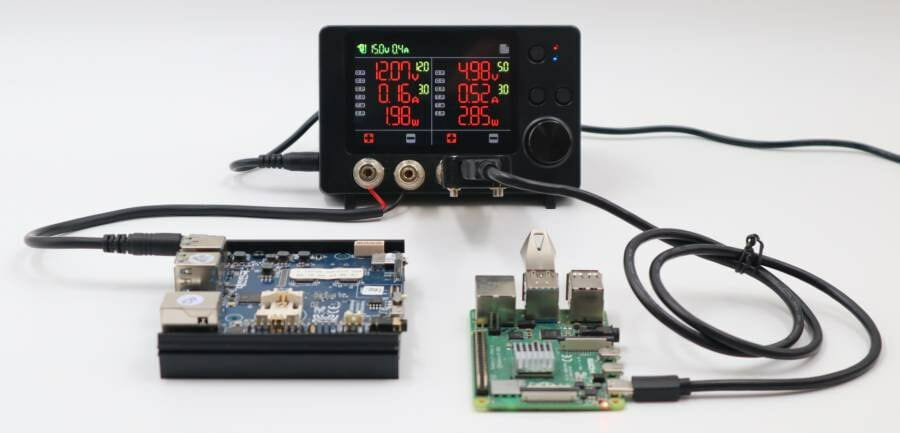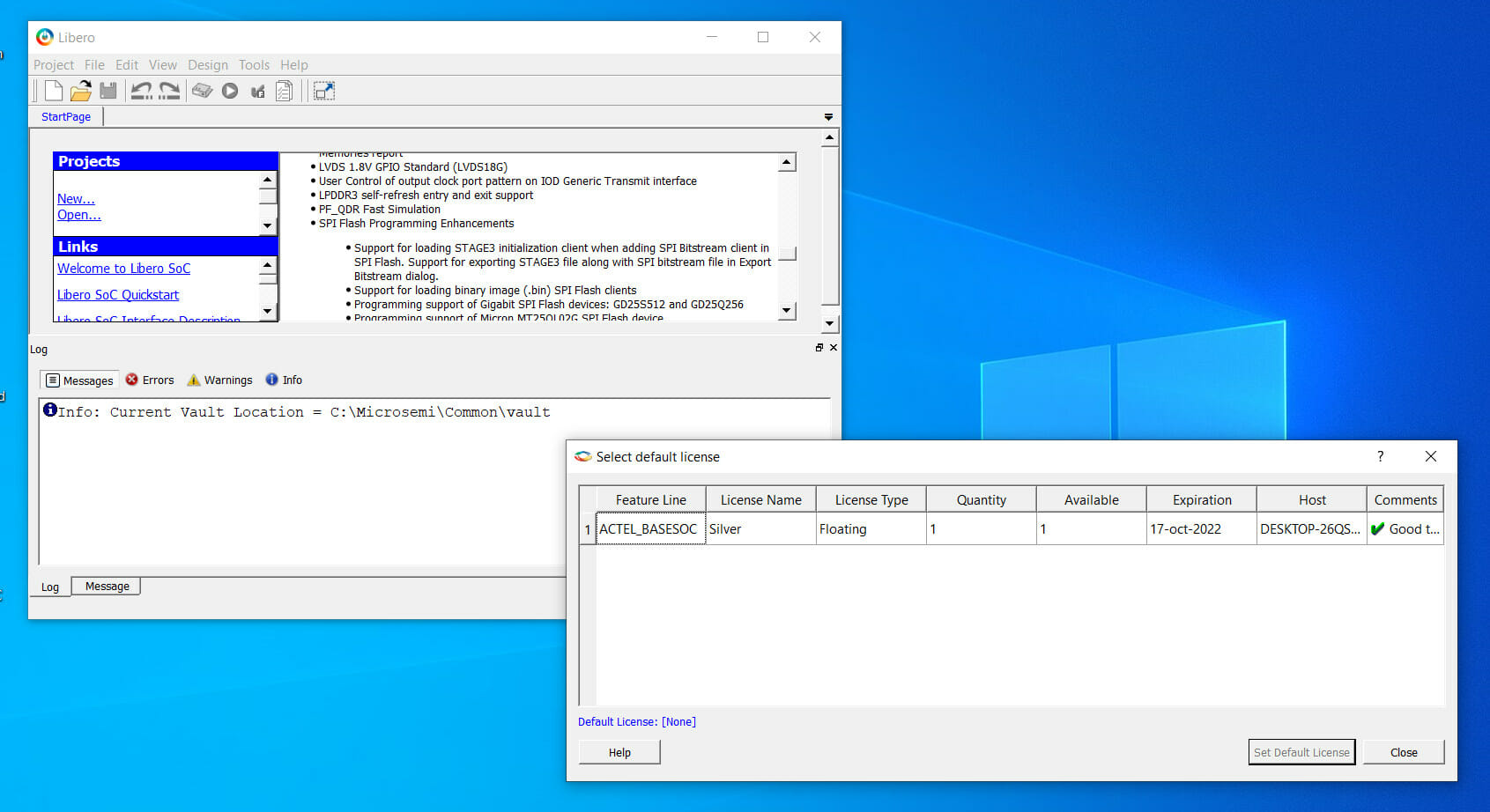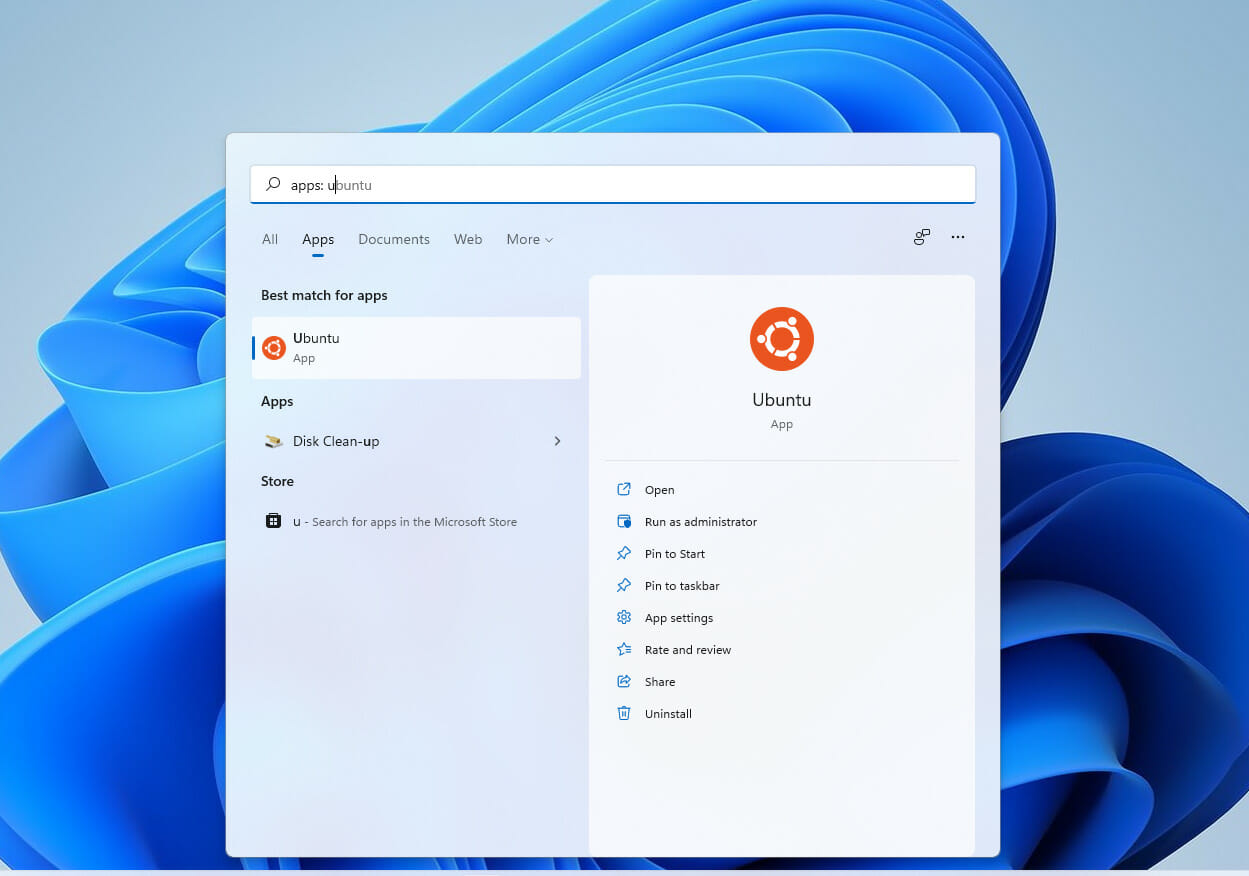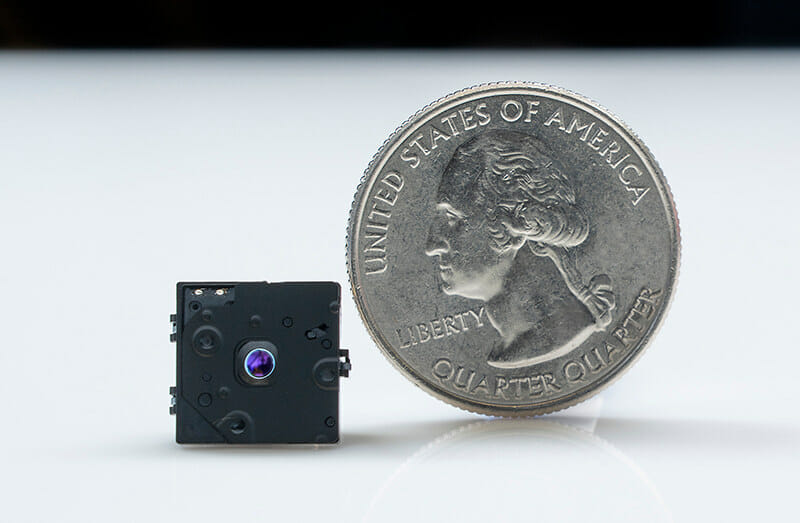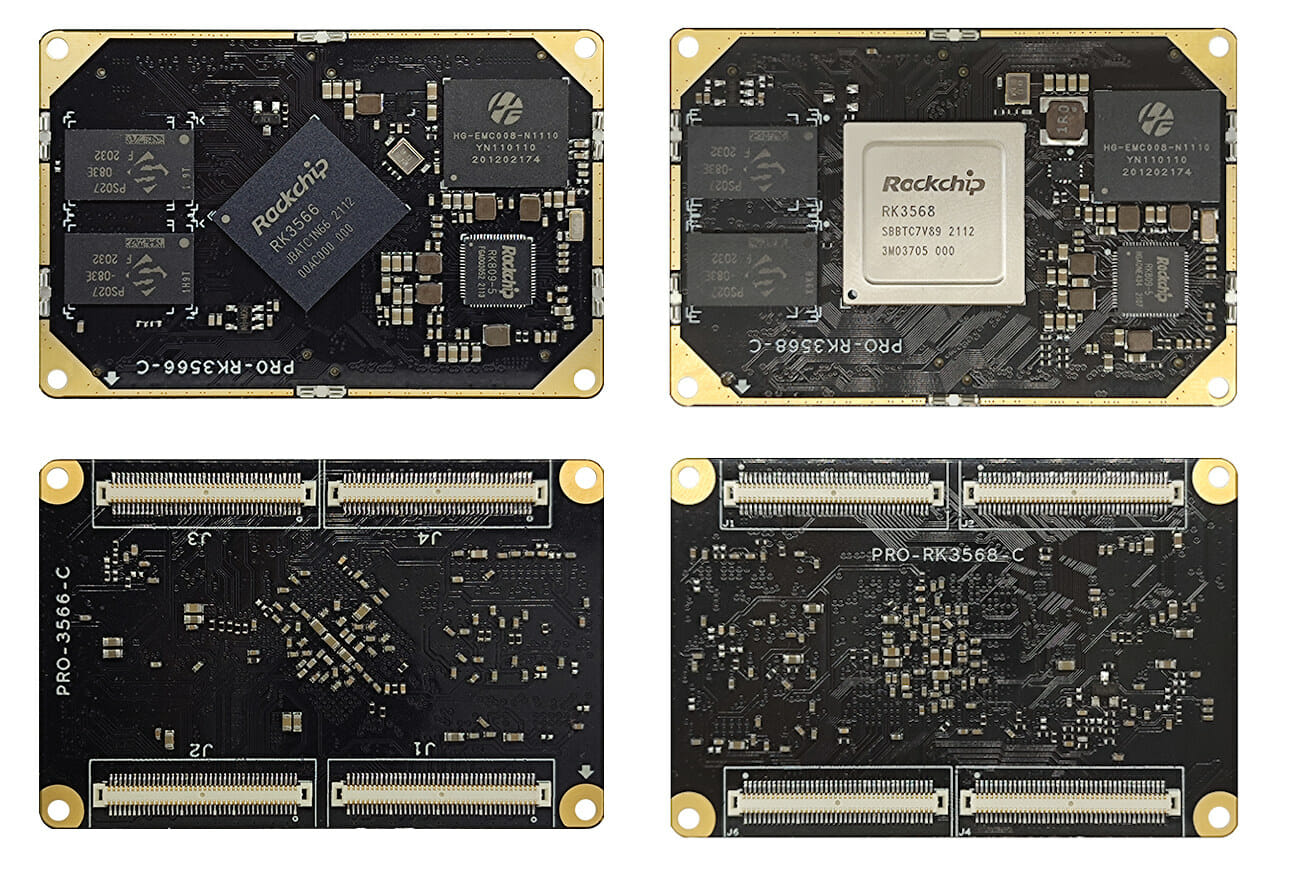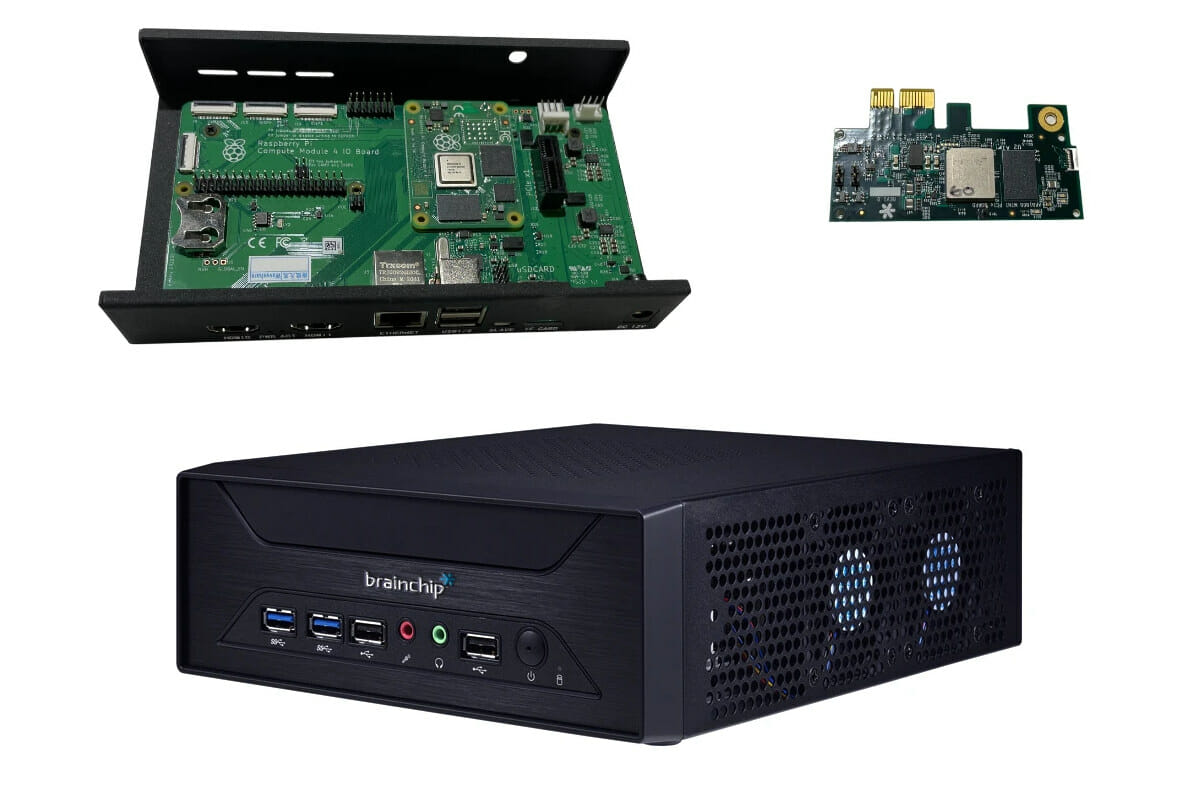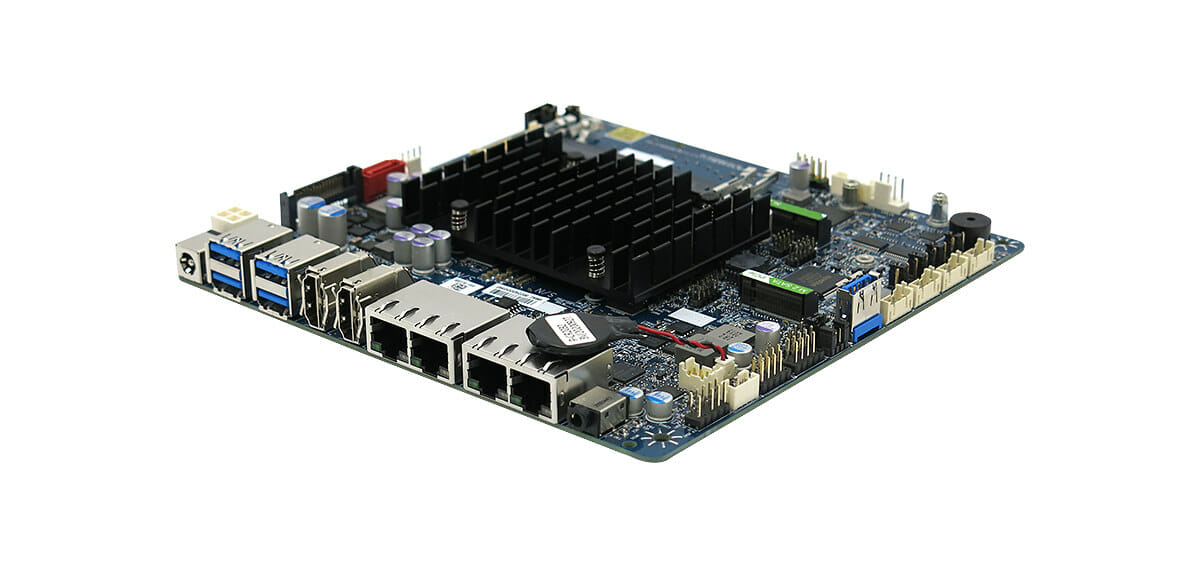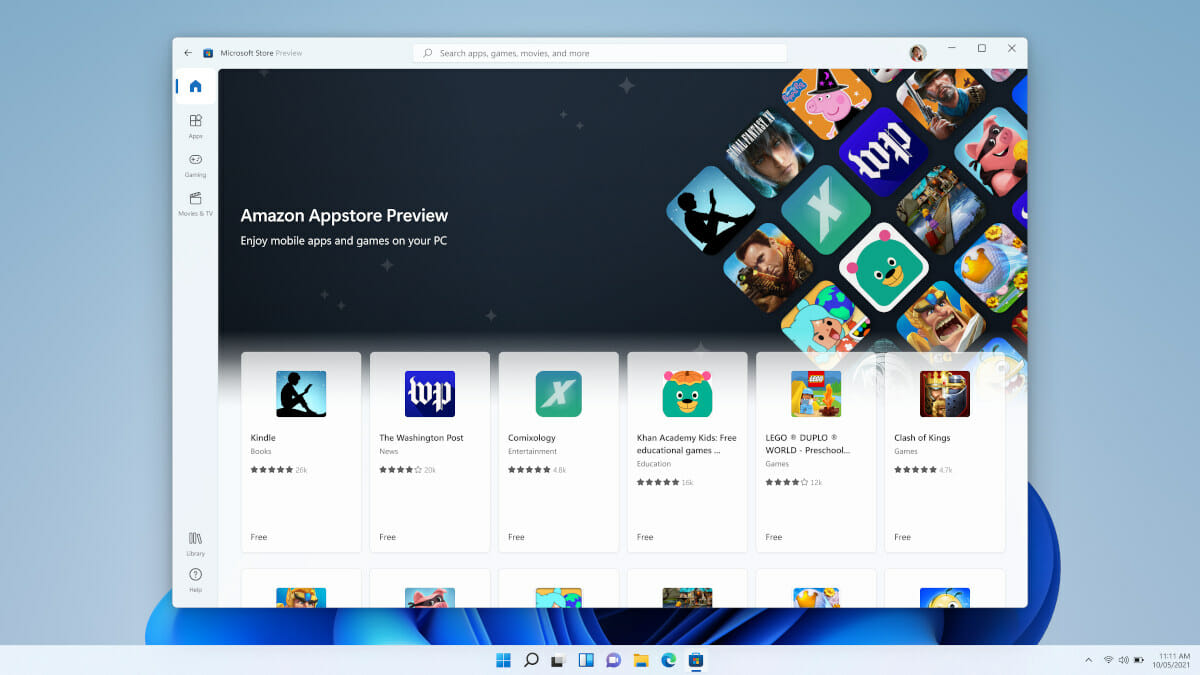Hardkernel has launched a number of popular Arm SBC’s with the ODROID family over the years, but the Smart Power 3 is a different type of product, as the ESP32-based smart power meter can help embedded systems engineers optimize their hardware and software power consumption and/or check for spurious power peaks during boot up or shutdowns. In the past, we’ve reviewed relatively expansive tools like Qoitech Otii Arc or gone the DIY route, but at $45, Hardkernel offers a power monitoring solution that’s both inexpensive and easy to use, albeit with fewer features than Qoitech’s device. Smart Power 3 specifications: MCU – ESP32 dual-core microcontroller via ESP32-WROOM-32E module Output Channels – 2x output channels (Max 50W + 50W) via 2x 4mm banana jacks each Output Voltage – 3V DC to input voltage – 1V Output Current – 3A max per channel Measurement Voltage, Current, Power Maximum sampling rate: 200Hz (5msec […]
My experience installing Libero SoC in Ubuntu and Windows 10
A few weeks ago, I received Microchip PolarFire SoC FPGA Icicle Kit with FPGA fabric and hard RISC-V cores capable of handling Linux. I wrote “Getting Started with Yocto Linux BSP” tutorial for the board, and I had initially titled the current post “Getting Started with FPGA development using Libero SoC and Polarfire FPGA SoC”. I assumed I would write one or two paragraphs about the installation process, and then show how to work with Libero SoC Design Suite to create an FPGA bitstream. But instead, I spent countless hours trying to install the development tools. So I’ll report my experience to let readers avoid some of the pitfalls, and hopefully save time. (Failing to) Install Libero SoC v2021.v2 on Ubuntu 20.04 If we go to the download page, we’ll see Libero SoC v2021.2 for Windows and Libero SoC v2021.2 for Linux. Since my computer is running Ubuntu 20.04, I decided […]
How to upgrade a mini PC to Windows 11 and install WSL
In this short article, I show how to install Windows Subsystem for Linux (WSL) and how to force the upgrade of Windows 10 to Windows 11 in a mini PC rather than waiting for Windows to offer it. The reason I’ve coupled these two topics together is not because there is any dependency, but simply as I use WSL to help me perform administrative tasks like downloading and copying files when installing applications on Windows mini PCs. WSL installation Installing WSL has recently become so simple it is worth doing just to gain the flexibility it offers for so little effort. Now you only need to open ‘Windows Terminal (Admin)’ and enter wsl –install: then reboot for Ubuntu to start installing, during which you will be asked to create your user with a password, which finishes in Ubuntu: Further information about installing WSL can be found in Microsoft’s documentation. Now […]
$99 Lepton FS module cuts the cost of FLIR thermal cameras by half
Thermal cameras based on FLIR Lepton modules are pretty cool, but also quite expensive. Teledyne FLIR Lepton FS offers a much more cost-effective solution with the non-radiometric 160 x 120 resolution micro thermal camera module going for $99, or about 50% less than other FLIR thermal camera modules. The lower cost was achieved with some tradeoffs, notably a reduction of thermal sensitivity and scene dynamic range, as well as up to 3% inoperable pixels. But Ron Justin, GroupGets founder, told CNX Software that the lower specs are more than worth it for users only needing an imager, as opposed to a radiometric sensor. Lepton FS module specifications: Sensor technology – Uncooled VOx microbolometer Spectral range – Longwave infrared, 8 μm to 14 μm Array format – 160 x 120, progressive scan Pixel size – 12 μm Effective frame rate 8.7 Hz (commercial application exportable) Thermal sensitivity – <75mK NEDT (noise […]
Rockchip RK3566/RK3568 SoM’s feature board-to-board connectors or castellated holes
Rongpin Electronics has designed RK3566 and RK3568 systems-on-modules (SoM) with either board-to-board connectors or castellated holes for direct soldering to the carrier board, which adds competition to the Firefly Core-3568J AI Core Rockchip RK3568 system-on-module offered in a SO-DIMM form factor with an edge connector. The Rongpin Pro-RK3566 and Pro-RK3568 core boards are equipped with four high-speed Hirose connectors, while the RP-RK3568 Core board exposes I/Os through castellated holes around the four sides of the CPU module. Rongpin Pro-RK356x system-on-module & devkit Specifications: SoC – Rockchip RK3566/RK3568 quad-core Cortex-A55 processor @ 2.0 GHz with Arm Mali-G52 2EE GPU with support for OpenGL ES 1.1/2.0/3.2, OpenCL 2.0, Vulkan 1.1, 0.8 TOPS NPU for AI acceleration, 4Kp60 H.265/H.264/VP9 video decoding, and 1080p100 H.265/H.264 video encoding System Memory – 2GB DDR4 (option for 4GB) Storage – 8GB eMMC 5.1 flash (option for 16GB to 128GB) 4x Hirose board-to-board connectors with Storage 1x SATA […]
BrainChip AKD1000 SNN AI SoC gets Raspberry Pi and x86 development kits
BrainChip has introduced two development kits for its Akida AKD1000 neuromorphic processor based on Raspberry Pi and an Intel (x86) mini PC in order to enable partners, large enterprises, and OEMs to begin testing and validation of the Akida chip. BrainChip Akida neural relies on spiking neural networks (SNN) which enable high-performance, real-time inference at ultra-low power, notably much lower power than traditional AI chips relying on CNN (convolutional neural network) technology. Akida Development Kit based on Raspberry Pi CM4 Specifications: SoM – Raspberry Pi CM4 or CM4 Lite with SoC: Broadcom BCM2711C0 quad-core ARM Cortex-A72 (ARMv8-A) 64-bit @ 1.5GHz plus Broadcom VideoCore VI GPU RAM – 1GB, 2GB, 4GB, or 8GB LPDDR4 SDRAM Storage – MicroSD card for CM4 Lite, or 2GB to 32GB eMMC for CM4 Networking – Optional 2.4 GHz and 5 GHz 802.11b/g/n/ac Wi-Fi, Bluetooth 5.0 LE, Gigabit Ethernet PHY Carrier board – Official Raspberry Pi […]
Intel Celeron J6412 thin Mini-ITX motherboard offers four Ethernet ports
BCM Advanced Research is now sampling the MX6412J thin mini-ITX motherboard equipped with an Intel Celeron J6412 quad-core Elkhart Lake processor, up to 32 GB RAM via two SODIMM DDR4 memory slots, SATA and NVMe storage, as well as found Ethernet ports with namely two 2.5GbE and two Gigabit Ethernet RJ45 ports. Designed for fanless operation with a large yet thin heatsink, the industrial motherboard also sports two HDMI 4K video outputs, nine USB 3.0/2.0 ports, variable 12-24 DC input, as well as several serial ports, and more. BCM MX6412J specifications: SoC – Intel Celeron J6412 quad-core Elkhart Lake processor @ 2.0 GHz / 2.6GHz (Burst frequency) with 1.5MB cache, 16 EU Intel UHD Graphics; 10W TDP System Memory – 2x 260-pin SODIMM DDR4 memory slots for up to 32GB RAM (Note: Intel Ark list the 32GB limit for the processor, but sometimes they really mean per socket/channel) Storage – […]
Windows Subsystem for Android introduced on Windows 11
Following up on the company’s Windows Subsystem for Linux, Microsoft has now introduced the Windows Subsystem for Android that allows Windows 11 users to install Android apps either through the Amazon Appstore or the Microsoft Store. At this time, it is officially reserved for Windows Insiders part of the Beta Channel in the United States on eligible devices running Intel, AMD, and Qualcomm platforms, and at this time 50 apps are available with mobile games such as Lords Mobile, June’s Journey, or Coin Master, the Kindle app for reading books, and kids content that includes Khan Academy Kids and Lego Duply World. More apps are obviously planned, and as I’ll see later there are ways for any Windows 11 users to install Android apps. The Windows Subsystem for Android (WSA) is not installed by default, but it will be automatically installed if you either install the Amazon Appstore, the Amazon […]


